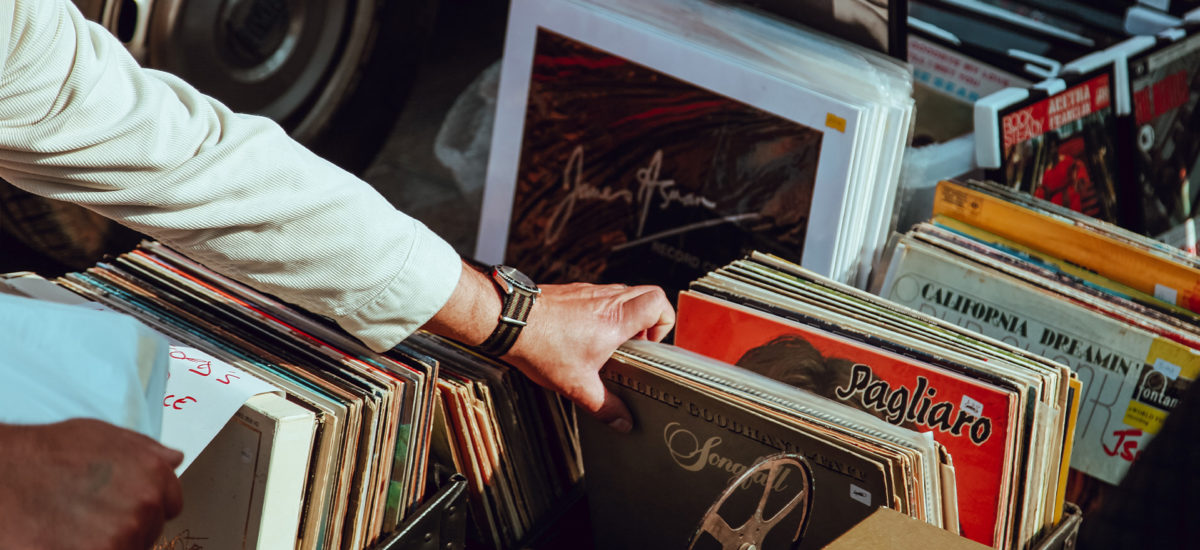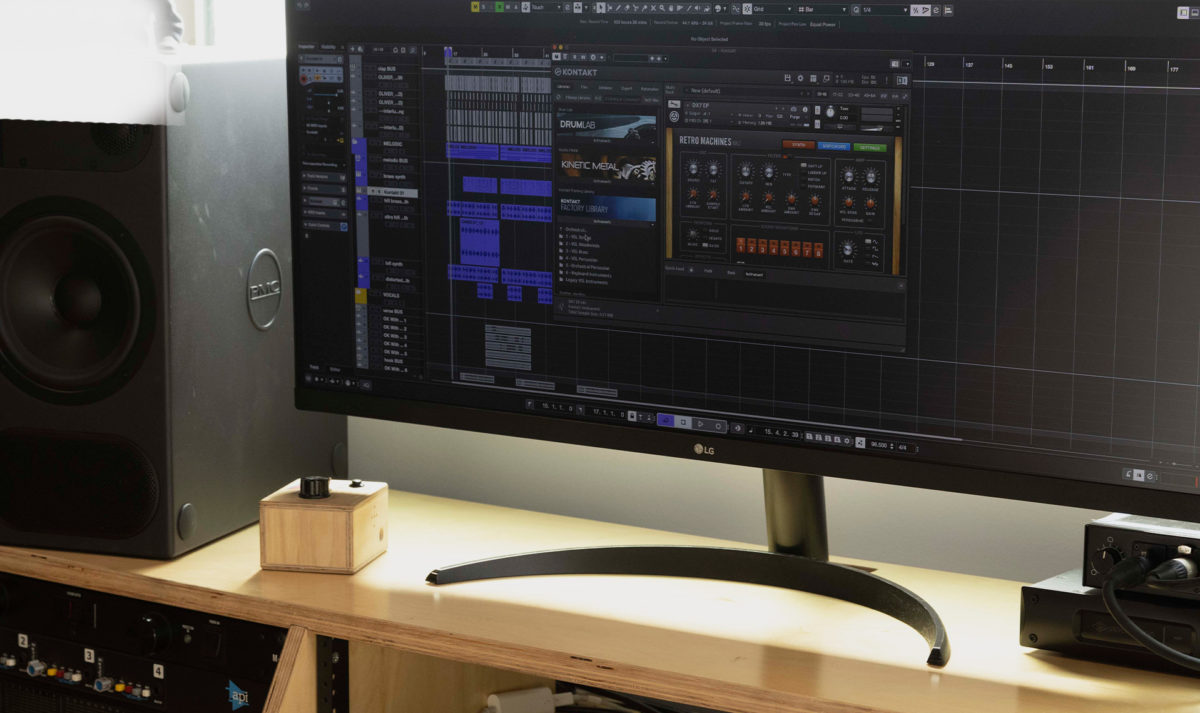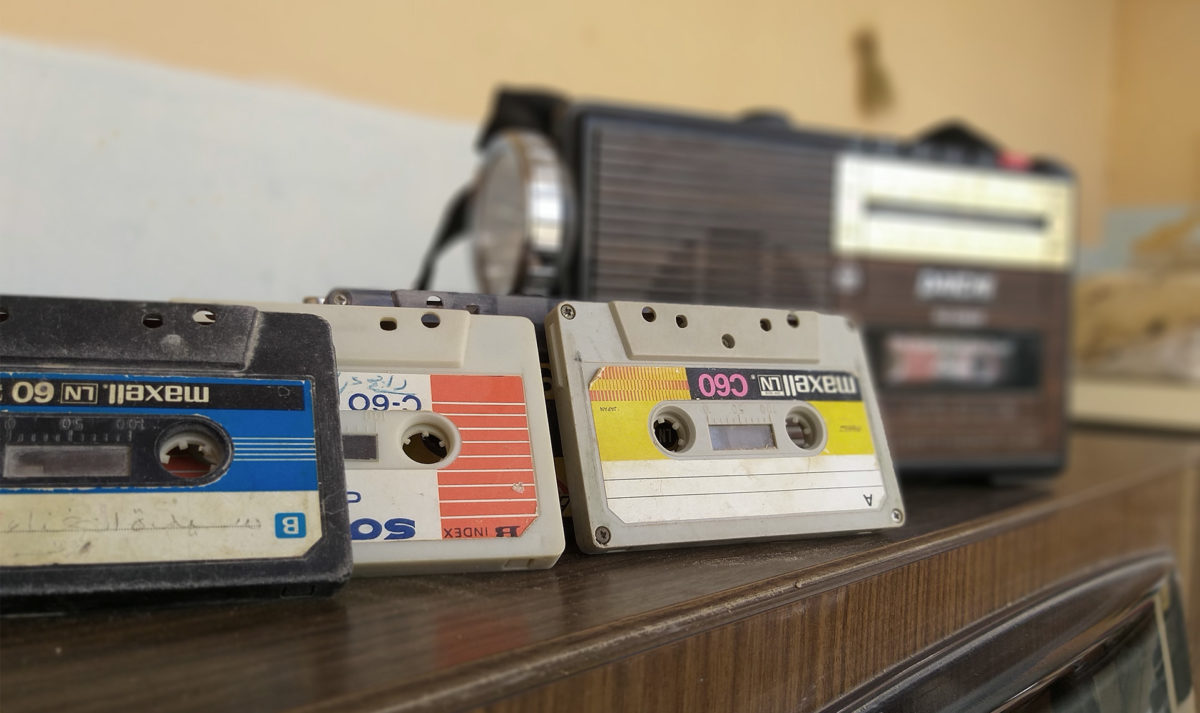
We often hear ‘vintage’ and ‘retro’ used in relation to design, fashion, and other areas of culture and the creative arts. But what do the words mean in the context of music? Both words bring to mind a rose-tinted nostalgia for our recent history. The word ‘vintage’ implies something from the past of particularly high quality – the cream of the crop – while ‘retro’ refers more specifically to the 20-30 years immediately before the present, and reproducing the sounds and moods characteristic of these times. As we are mainly concerned here with electronic music production, our historical timeline has a cut-off around the early 1970s, as it was only then that synthesizers and other electronic instruments and effects started to be manufactured for the mass market. Consequently, it has taken until now for ‘vintage’ to emerge as a meaningful category in relation to electronic sounds.
The words also suggest a ‘nostalgia cycle’, which loops round and round over a span of a few decades as certain aesthetics come in and out and back into fashion (think of the clichéd examples like trendy hairstyles or the width of jeans). Of course, we can plot a linear progression over time, as new technologies and resources emerge that push new, previously unimaginable ideas and innovations. But the styles do also appear to be suspended in a kind of repeating boom-bust cycle, and this definitely applies to music as well. Lots of today’s popular genres make use of signature sounds from the ‘80s and ‘90s, as artists and producers pay homage to the trailblazers of the previous era and ‘timeless’ building blocks are handed down, modernized, or revived by the next generation.
So what actually are vintage sounds? At least in terms of electronic and dance music, we’re looking mainly at the arrival of synths, drum machines, and samplers, and how these brand-new tools dramatically changed the artistic landscape. Post-disco, new wave, and the fledgling techno and hip-hop scenes relied almost entirely on electronic instruments, machines built with the technology of the day – before computers and software were even a thing. They used analog circuitry and electrical voltages to make different tones, often with some uncontrollable buzz or hiss in the background as well. While this noise was a mere byproduct at the time, the same thing is nowadays thought of as ‘analog warmth’ and actively sought out by producers trying to work out how to make recordings sound vintage.
There are many examples of specific gear influencing the development of genres, or even the invention of new genres altogether. Perhaps the most famous of these are the 808 and 909 drum machines, pivotal in the evolution of dance and hip-hop music. E-mu samplers have gained a similar prestige, favored by hip-hop legends like J Dilla and A Tribe Called Quest. Technological limitations mean these machines run at a lower sample rate than modern equipment. This gives the percussion a pleasing, crisp quality, which you can imitate by downsampling to get a vintage sound effect.
These big, game-changing innovations often came about by pure chance. The 303 synthesizer was initially designed to emulate a real bass guitar, so musicians could sequence an accompaniment to play along with live. Anyone who has heard a 303 will know it sounds nothing like a bass guitar, and the product was a commercial flop when it was released in 1981. However, second-hand units were picked up by electronic producers and the unique twangy sound would become a landmark of acid house and techno. It just goes to show that progress is not a straight line, and unexpected consequences can lead to new, exciting sounds; a failure can be turned into a success if we dare to look at it from a different angle.

Retro Sounds, Modern Tech
The blessing and the curse of vintage hardware is its unpredictability; no two units will sound exactly alike. Slight variations in the physical construction, plus general wear and tear from use over time, lead to fluctuations and imperfections that give analog equipment its unique color and organic charm. For example, Korg re-issued their classic MS-20 synth a few years ago in the form of the MS-20 Mini, in a slightly smaller casing but a more-or-less exact replica of the original analog circuitry. Despite this, the sound is quite distinct from a vintage unit that has been in use since the original production run between 1978-1983. We’re living in a curious moment right now, when instead of trying to get the best, cleanest recording possible, artists and producers instead yearn for the imperfections that give vintage music its depth and character. While modern digital production methods are perfect and consistent and predictable, we’ve worked out that this is not necessarily the path to the most powerful, evocative music.
The search for analog warmth has become a lifelong quest for many producers and audiophiles with a passion for sourcing and collecting vintage instruments, and a bustling second-hand market has emerged around this. As many of these products stopped being made many years ago, the numbers are strictly finite, slowly decreasing as individual units die or sit collecting dust in forgotten corners. Because of this, some of the rarest holy grails are sold for eye-watering prices. But the motive is far from merely financial; the experts working on restoring and servicing old equipment have a real respect for the idiosyncrasies of each piece, keeping these electronic antiques alive, and in a playable condition for as long as possible.
Admittedly, there is a degree of snobbery associated with analog gear – the assumption that making music with old, rare hardware is somehow more authentic. The adage ‘all the gear, no idea’ comes to mind. As ever, the truth is that the most important thing is not what you have, but what you do with it. Indeed, software has come leaps and bounds in recent years, and producing in-the-box with plug-ins certainly has its advantages. For one, it is more accessible, both in price and availability. Many classic synths and instruments have official software versions; sure, they won’t sound or feel exactly the same, but they are much more attainable and in many ways more practical to use. Synth collections such as RETRO MACHINES offer a wealth of vintage sounds that are ready to play instantly, putting a whole studio’s worth of gear in the palm of your hand.
A big benefit of working with software is its consistency. What you may lose in analog charm, you gain in not having to wrestle with temperamental equipment. It is also more flexible and offers more possibilities for tweaking and automating parameters in your DAW, making it easier to integrate into a project and more compatible with other instruments and effects. You can have an array of plug-ins interconnected and working together, without the headache of wiring up different boxes. While the technical side of things is enjoyable for some producers, others just want to get on with writing music. In this sense, it could be argued that software is more efficient.
If you’re wondering how to make your music sound old, the obvious answer is to bring some old machines into your workflow. However, you might not have the cash, or the space, or the time, and part of the retro sound comes from production techniques and processing anyway. There are a number of tricks you can try to create some vintage vibes in-the-box, by introducing noise, effects, and organic looseness to add depth if your tracks sound a bit flat, or movement if they’re feeling static.

How to Make Audio Sound Vintage
The first basic point is to work with appropriate instruments and presets that evoke the retro sounds you are hoping to achieve. Thinking about how to make ‘80s synth sounds, for instance, this aesthetic featured lots of rich, polyphonic synth-work that sounds a bit cheesy by today’s standards (not necessarily a bad thing!). SUPER 8 would be a good fit here, as it offers a diverse range of bold chords and vintage analog tones, with easy parameter mapping to maximize customization. There are loads of alternatives available, and a good thing about using software is it means you can try out a range of different instruments until something clicks, and you find the perfect sound.
Effects plug-ins do a lot of the work towards achieving a vintage sound with a modern DAW set-up. Older gear had a narrower frequency range, which can be recreated with some adventurous use of EQ. Try reducing or cutting out the extreme highs and lows, and experiment with boosting particular midrange frequencies until you find the desired tone. Amp emulators reproduce a wide range of crunchy vintage guitar and bass styles, and can obviously be applied to other instruments too. Detuning a synth or applying a chorus effect can give it that wavering, slightly fuzzy character that you often get from analog instruments.
As with picking the right instrument sounds, it’s important to use era-appropriate effects; the easiest way to check you’re on the right track is to use old songs as references, listening closely and trying to mimic the vintage sound effects. It can be good to group elements in bus channels and process them with effects together, as this helps blend the different sounds into one. Alternatively, you could try out a bigger multi-effects plug-in such as MOLEKULAR, which lets you apply and manipulate multiple effects at the same time, chained together with complex signal routing options.
One effect that hasn’t been mentioned yet is distortion, which is vital for adding the noise and hiss that characterizes retro sounds. But adding a distortion or saturation effect is just one way of achieving this. You could physically record a sound onto tape and then back into the computer, picking up some real-world grit and crunchy compression along the way. Live instruments or ambient noise can also be recorded and added to your track to give it more depth and distinctiveness. Or, for an easier method, samples of vinyl and tape hiss are included in REAKTOR and other production software. The trick is to deliberately add a bit of dirt and imperfection, imitating the subtle harmonic distortion that occurred in vintage music as signals passed through physical circuits, and they colored the tone of the audio.
Aside from sound sources and effects, the mix-down is another area where you can impart a retro sound and energy to your music. A common complaint of modern music is that it is often overly compressed, to the point that all the life and subtlety is squashed out as recordings fall victim to the ‘loudness war’. Mixing and mastering less aggressively allows for more dynamic range, although it might be quieter overall. It is also worth thinking about the arrangement itself. A lot of modern electronic music is quantized to a rigid grid, which can be very useful for correcting mistakes and keeping elements in sync, but can also make the music sound listless and static. Drawing notes manually on the grid, or playing something live and leaving it unquantized, can give the music more swing and a looser, spontaneous feel.
As producers in the past had a limited number of recording tracks available, and were recording onto physical media, they were forced to be much more selective and employ a ‘less is more’ approach. Today, in contrast, we have a practically infinite number of tracks, which gives rise to the temptation to keep adding and adding, resulting in a bloated, muddy sound. So be wary of this and consider your note placement carefully. If you listen to classic, golden-age hip-hop beats, the impact comes from the tone of the drums but also the spaces between hits; this is where the groove dwells. As is true for a lot of retro sounds and vintage styles of music, the feeling and the beauty come from the little imperfections.















